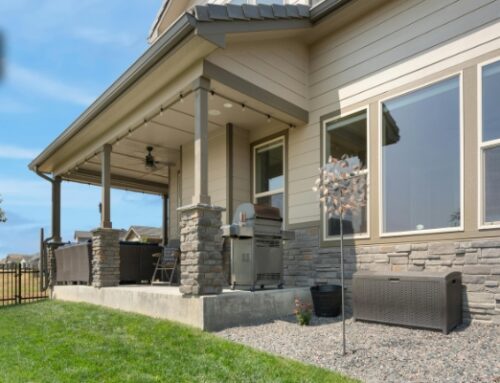As storms intensify and increase within the U.S., there has never been a better time to protect your home. What about one other line of defense in particular that is underestimated? Your siding. A proper siding could spell the difference between significant storm damage and assurance.
This blog will explain the most storm-resistant siding materials, their characteristics, and how to make the right choice.
Key Features to Look for in Storm-Resistant Siding
Not all siding makes it through storms. These are what really matter in making the best decision:
- Impact Resistance (ASTM-rated) – Choose impact-tested siding that is ASTM impact-rated. This is capable of surviving flying debris and hail and can minimize damage from extreme weather conditions.
- High Wind Load Rating (up to 200+ mph in hurricane areas) – Siding that has a higher wind load rating is capable of withstanding wind speeds of a hurricane and holding the structure of your house together.
- Moisture Resistant – Storms are accompanied by heavy rain. Moisture-resistant siding does not cause mold, rot, and expansion, keeping your home healthy and dry.
- Fire Resistance – Where there is the risk of fire, siding with Class A fire rating will make sure the flames do not creep into your home.
- Low Maintenance and Durability – Choose a siding that does not crack, fade, or warp and thus will be strong and beautiful and need little maintenance over the coming years.
Top Storm-Resistant Siding Options
The safety of your home depends on your roof and the siding. With good siding, your home will be adequately sheltered against wind, hail, and water damage. Let us talk about the best storm-proof siding for homebuyers to look for, especially where stormy weather is rising.
1. Fiber Cement Siding
Fiber cement siding is at the front in storm regions. It is made of cement, sand and fibers, thus it is highly hard and can withstand strong winds and excessive rain. It will not bend, decompose, and split even when the weather becomes very harsh.
Homeowners love its durability, and it does not catch fire. While it is heavier than many other options and can cost more up front, it offers long-term value. If you are planning to stay in your home for years to come, this investment tends to pay off through low maintenance and high resilience.
2. Engineered Wood Siding
For people who want the appearance of wood but with more durability, engineered wood siding provides the compromise. It is made up of wood fibers bonded together and attached with resins and treated to resist moisture, insects, and rot.
Storm-wise, it holds up against pressure well. It is also not as dense as fiber cement, which might make it easier to put in place and more affordable. It can withstand high winds and little hail, and it is similar to any wood product in that it must be well-sealed and well-maintained. Properly maintained, it can become a successful method of storm protection.
3. Vinyl Siding
Vinyl siding is among the most common choices on American houses, and contemporary high-performance vinyl can even accomplish more than you might imagine in a storm. They are reinforced better and built thicker and heavier, and will not crack easily or peel off in poor weather.
In extreme climate areas, basic vinyl might have some flaws unless upgraded. Heavy-duty vinyl siding provides a better possibility of survival when exposed to windy weather and impacts.
4. Metal Siding
Metal siding is no longer just used on barns and commercial buildings; it is coming back in style with modern finishes and overall durability. Both aluminum siding and steel siding are tops in hail-damaged regions due to their puncture- and fire-resistant properties.
Steel is the harder of the two, with aluminum being lighter and more resistant to rust. Both of them can withstand pressure from water, and unlike some products, they will not burn. But dents from hail or debris in the air will detract from appearance, possibly an issue with curb appeal. Even so, as functional protection, metal is among the best.
5. Brick and Stone Veneer
Durability is another material you will never go wrong with in stone and brick veneer. They also do not require much maintenance, thus are perfectly fit for individuals or homes that are busy or in regions that are largely prone to storms.
Nonetheless, these materials are quite costly because of the technicality involved in the installation. Still, they are durable and offer security that some other types of material cannot.
6. Stucco
Old stucco has been around for thousands of years, but current reinforced or synthetic stucco solutions take storm protection to the next level. When installed correctly with mesh reinforcement and sealants, it is resistant to cracking and wind damage.
Stucco performs optimally in dry, windy weather conditions such as those in the Southwest. It is not waterproof by nature, though, so houses in flood areas or areas with lots of rain will require other waterproof barriers. For hot, arid storm areas, stucco today provides a sleek appearance and effective resistance.
Installation and Warranty Tips
- Always use a certified contractor so your siding holds up to pressure and the warranty remains intact.
- Ask them if they have storm-rated siding installation experience before.
- Use products with 30+ year warranties and test-verified storm ratings for worry-free security and long-term durability.
Conclusion
Storm-resistant siding is not a mere home improvement; it is an investment in security and durability. You can secure what you value without losing curb appeal since there are choices that meet specifications in terms of form and functionality.
Contact Grand Exteriors to discover the higher-quality siding options designed specifically for your climate and budget.




